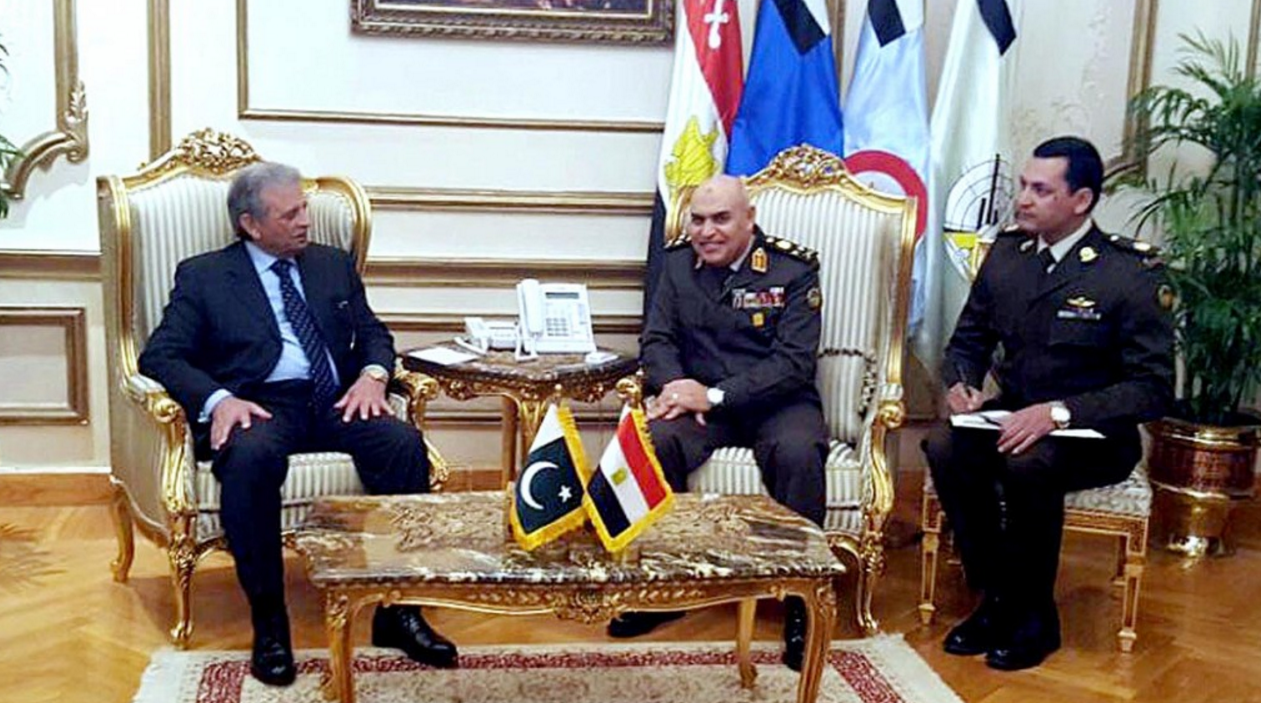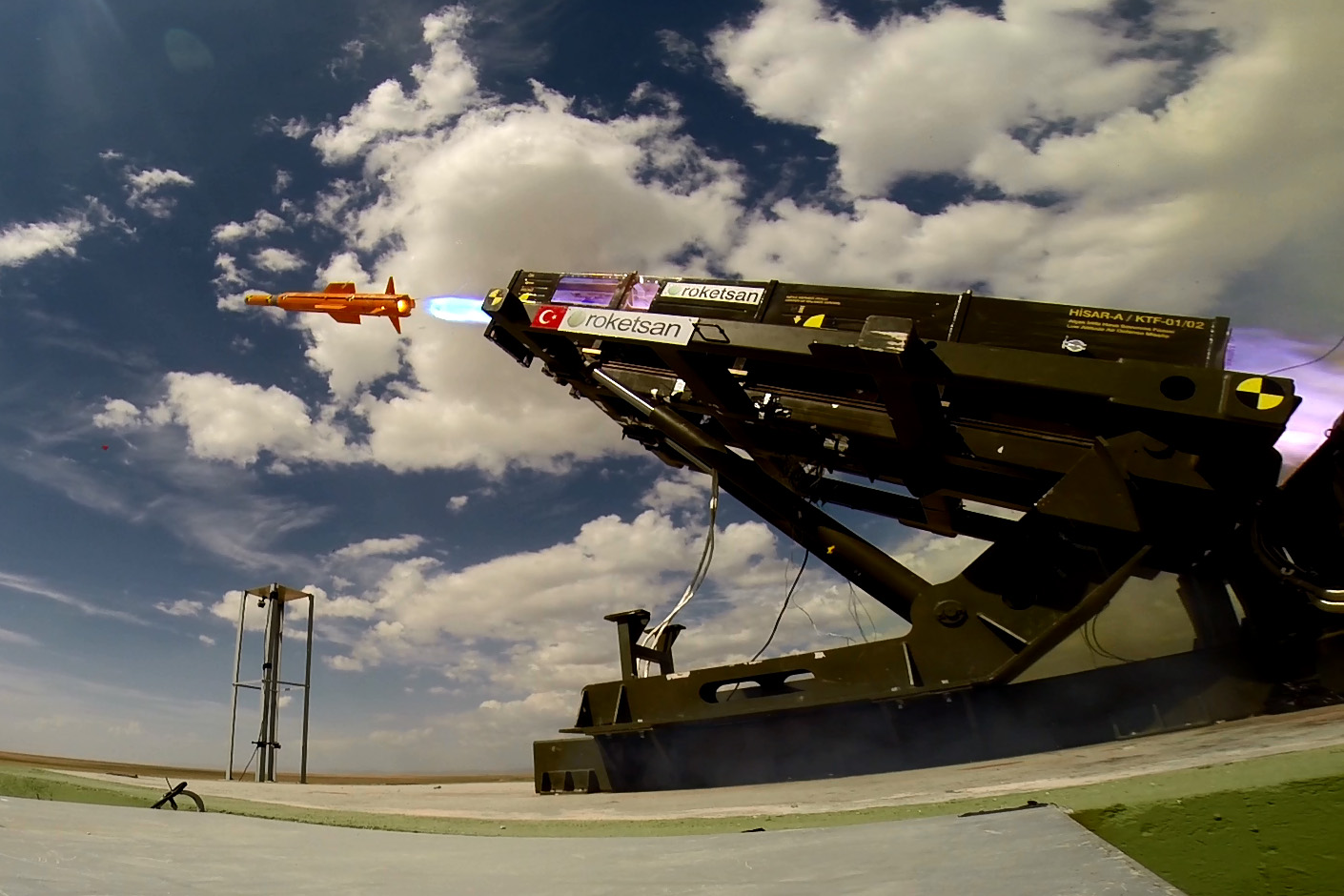2649Views 12Comments

Pakistani Minister of Defence Production on official visit to Egypt
Pakistan’s Minister of Defence Production (MoDP) Rana Tanveer Hussain is on an official visit to Egypt.
As per the Associated Press of Pakistan, Mr. Tanveer had met with Egypt’s Minister of Defence General Sedki Sobhy and with Egypt’s Minister of Military Production Dr. Mohamed Said el-Assar.
Matters of “bilateral importance” were discussed in both meetings.
Notes & Comments:
In prior years, Pakistan had hoped that Egypt would emerge as a major customer of the JF-17 Thunder, especially since the fighter was designed to replace legacy lightweight platforms such as the MiG-21, F-7, and Mirage III/5, which are also in service in the Egyptian Air Force.
However, along with its massive 200+ F-16 fleet, which is poised to continue serving as its mainstay fighter, the Egyptian Air Force is also in the process of inducting Dassault Rafale and Mikoyan MiG-35 (or at least MiG-29M/M2) from France and Russia, respectively.
It is unclear how the JF-17 could figure into Egypt’s future air power equation, especially because the MiG-35 is likely being sought to supplant the MiG-21 and F-7.
The notion of proposing the JF-17 Block-III as a low-cost active electronically-scanned array (AESA) radar-equipped multi-role fighter has merit, especially if Pakistan Aeronautical Complex (PAC) succeeds in securing the RD-33MK turbofan. This would equip the JF-17 with a more efficient powerplant, and in Egypt’s case, a level of commonality with the late-model Fulcrum.
Alternatively, the two sides could be examining other areas of collaboration, such as co-production of armoured vehicles. The Pakistani MoDP could also be marketing Pakistan Ordnance Factories (POF) and its development plans, especially factory upgrades and new firearms platforms.



12 Comments
by Donny G
Block 3 will have RD-33MK engine?
by Bilal Khan
PAC is considering an engine change, isn’t tied to the Block-III nor is it necessarily unavailable to it. A PAC spokesperson (Air Commodore Khalid Mahmoud) mentioned that if a customer asks, an engine switch could happen.
by Shafiq Ahmed
will jf 17 block 3 be able to stand against heavy weights like rafale
by MT
Are you aware that integration of new engine is 3-4yrs of work?Integration of a simple missile is 2-3yrs of work.Aesa radar integration is again 2-3yrs of work
Do the same rule apply in pakistan or chinese Chengu R&D units??
by bill
Ws13 is also a serious contender and may take over as RD33mk perhaps in final stages of production yet meanwhile Ws13 is in use by Chinese.
by Bilal Khan
I should be aware if I had said, “…and it can all happen in 12 months.” Which I didn’t. Besides, I have always maintained that the Block-III is a few years away, at least.
by Sami Shahid
Well Pakistan should focus on countries like Iraq , Libya, Philippines, CZECH, Belarus, Zimbabwe and Colombia.
by Keyser
Only if India buys the F16….That decision if it comes (And thats a big IF) will be a few years down the line. I am sure there will be plenty of spares stocked well before then….
by Keyser
In terms of JF-17 powerplant, Air Commodore Mahmood told AIN that, “We’re satisfied with the [Russian Klimov] RD-93, but some customers may want another engine. We have done preliminary studies on the [Eurojet] EJ200 and [Snecma] M88. They are doable.” – June 15, 2015
Do the work before you need to, and when you need it you can be quite quick…….
by Diaa Ahmed
Pakistani plane problem of JF-17 it’s not fit with the level of hostilities faced by the Egyptian Air Force
There are opportunities for cooperation in the production of weapons of many joint investments to meet the Egyptian and Pakistani armies requirements such as guided weapons and missiles and cruise missiles Joe Joe
And the production of spare parts and maintenance of fighter jets and transport helicopters to joint development of a
Meanwhile, Egypt produces water treatment and sewage treatment plants can be exported to Pakistan, and the same thing in the field of railway wagons and other equipment industry
by MT
doable doesnt mean magic. Any new powerplant integration requires 3-4 yrs of consistent R&D
by amar
I think @saqrkh:disqus is right,you can integrate an engine of same or similar size into the airframe with lesser amount of time.The bigger the engine is,bigger will be structural changes.Now when you have fiddled with the structure of the plane–a lot of your stability and control derivatives get changed. This has to be evaluated in a wind tunnel–which is a time consuming process. This is followed by tweaking flight control algorithms.So in essence, Integration of engine takes lot more time than lets say integration of an ordinary BVR or WVR missile–provided We know what kind of protocol is used by missile and the frequency and modulation of data link.
PS:Kindly note these stab and control derivatives are not function of size but function of the design of the plane,AoA,mach,rates to name a few.That is,if the shape of the plane remains the same then the size doesnt affect the derivatives.